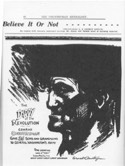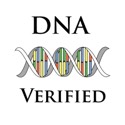The Reed and Berbach Families of New York State - Person Sheet
The Reed and Berbach Families of New York State - Person Sheet
Baptism30 Jan 1701, Entzberg, Commune Maulbronn, Duchy of Wurttemberg (Lower Palatinate) Germany368,363 Age: <1
ReligionProbably belonged to the Lutheran church in Stone Arabia369
FatherJohann (John, Hans) Frederick GUNDERMANN (SONDERMANN, COUNTRYMAN) (ca1670-1717)
MotherMaria Barbara
Spouses
Deathaft 1757366
ChildrenAdam (1719-1804)
Marcus (1720-1793)
Frederick (-1780)
Conrad (-~1790)
Johannes (John) (1736-1789)
John George (-1808)
Anna Rosina (Rosana) (ca1732-ca1786)
Notes for Johann (John) Georg Cunradt (Conrad, Conradt) GUNDERMANN (COUNTRYMAN)
“Conrad Countryman is said to have first settled in Schoharie county, New York. Later he moved into Montgomery county where many of his posterity are known to have resided during tie Revolutionary War. Fort Willet was built on some of their land. It is further interesting to note that twenty-seven of his posterity enlisted as soldiers in the war.”372
“It is possible that Conrad and Margreth, upon leaving Rhinebeck, settled in “Harman’s Dorf” in the Schoharie tract and that at least their first two children were born there.”370 According to Alvin Countryman in the Countryman Genealogy, Conrad may have helped found Hartman’s Dorp (Schoharie) under Captain Hartman Windecker.
Conrad Conterman and Casper Leyp were granted a patent for 2000 acres to lie south of the Maquas (Mohawk) River in the present-day Dutchtown area in Mindenville, said acreage to be divided equally between the 3 men. Together with another patent Conrad obtained title to about 1600 acres in total. He lived and died in Dutchtown and he and his wife were probably buried in a private plot across the highway from the site of his son Captain George’s farm on land newly owned by heirs of Alfred Walradt (Walrath).348
1701:
On 30 Jan 1701 Johann Conrad was baptized as Georg Conrad in Entzberg, Germany.363
1710-1711:
“On their arrival in 1710, John Frederick and his family settled at New Town, in the West Camps”, on the Hudson River.356 He first appears on the Hunter Lists on 30 Jun 1710.357
In a census of the Palatines in 1710, John appears with 3 sons, ages 9-15 years old. John also appears in the 1711 list of Palatines of Livingston Manor.348 These sons were probably Georg Cunradt (Conrad), age 9; John George, age 12 and Andreas Frantz, age 15.356
1713-1723:
During the 1712/1713 resettlement of Palatines, did Conrad go to Rhinebeck or Schoharie? Family legend as written by Norman W. Countryman states: “John Fredrick Countryman (Conterman) lived in a Hudson river town and having the three sons in 1711 or a little later, moved to Schoharie county, New York, with other friends, traveling on foot through the wilderness in winter, with their goods carried on their backs and sleeping out in the woods where wild beasts were around, keeping fires to drive them away…One son, Conrad, of whom I am a descendant, lived in Schoharie, N. Y. for some time.”360
In 1713, at the age of 12, Conrad may have relocated to Rhinebeck, New York with his family. His brother, Andreas lived there in 1719. After resettlement in 1712/1713, many Palatines went to Schoharie and many to Rhinebeck.373 However, this is not proven.
Conrad “may have been of the company which, under the leadership of Captain Hartman Windecker, founded ‘Hartman’s Dorp.’ One of his older sons, Adam, owned a farm there in 1802.”374
“John Coenr. Conterman” was naturalized on 8 and 9 Sep 1715 in Kingston, New York.375
1723-1731:
Many Palatines migrated to Pennsylvania and many to the mid-Mohawk Valley, while some chose to stay in the Schoharie Valley. In 1721 permission was granted to the Palatines by Gov. Burnet to purchase land in the Mohawk Valley from the Mohawks.376
“Due to a mix-up of land grants made by the English Crown in 1723, the Palatines were forced to leave the settlements at Schoharie. From here they scattered to the Middle Mohawk Valley onto lands they bought in what was then known as the ‘Canajoharie District’, now the present counties of Montgomery and Herkimer. The final settlements were made at places now known as German Flatts in 1722; the Stone Arabia in 1723 the Weiser Patenet in 1723; the Windecker Patent in 1723 (which included Casper Lype and Conrad Countryman)”377
Norman W. Countryman states: “Records show that some of the Germans in Schoharie went to Pennsylvania, and Conrad moved from Schoharie to the now [1925] town of Minden, Montgomery county, New York, and in the settlement along the road call the Dutchtown road or highway in the year 1723, with other friends and neighbors - Lipes, Keysers, Hawns, Sanders, Diefendorfs, Mayers (now called Moyer), Houses, Zimmermans, Klocks, Millers, Zollers, Windeckers and others.”360
“On September 16, 1730, Hartman Windecker, Conrad Countryman and Casper Lype petitioned John Montgomerie, governor of the Colony of New York, for a license to purchase Indian lands.”378,379
“The land grant, or Letters Patent was issued November 12, 1731” and was called the Windecker Patent” It was “located in what is now the north-central part of the present township of Minden, Montgomery County, New York.”380 and consisted of 2000 acres.381,379
“In the split-up of the patent, the western portion went to Windecker, on which Fort Windecker was built in 1777. The eastern third went to Casper Lype, near which Fort Plank was built in 1776. The central third went to Conrad Countryman on which Fort Wllett was built in 1780.”382 A description of the patent and these forts is given in Beers History of Montgomery and Fulton Counties, N.Y.
1752-1753:
“On April 23, 1752, Conrad received an Indian deed from Pauley Furichjorie of the Wolf clan, Joseph Furichjorie of the Turtle clan, and Adam of the Bear can, all of the Mohawk tribe. This land, then called the “Countryman Patent,” contained 905 acres.” The Patent was about two miles south of the Windecker patent and was granted to Conrad on October 13, 1753.”382,383
“It is possible that Conrad and Margreth, upon leaving Rhinebeck, settled in “Harman’s Dorf” in the Schoharie tract and that at least their first two children were born there.”370 According to Alvin Countryman in the Countryman Genealogy, Conrad may have helped found Hartman’s Dorp (Schoharie) under Captain Hartman Windecker.
Conrad Conterman and Casper Leyp were granted a patent for 2000 acres to lie south of the Maquas (Mohawk) River in the present-day Dutchtown area in Mindenville, said acreage to be divided equally between the 3 men. Together with another patent Conrad obtained title to about 1600 acres in total. He lived and died in Dutchtown and he and his wife were probably buried in a private plot across the highway from the site of his son Captain George’s farm on land newly owned by heirs of Alfred Walradt (Walrath).348
1701:
On 30 Jan 1701 Johann Conrad was baptized as Georg Conrad in Entzberg, Germany.363
1710-1711:
“On their arrival in 1710, John Frederick and his family settled at New Town, in the West Camps”, on the Hudson River.356 He first appears on the Hunter Lists on 30 Jun 1710.357
In a census of the Palatines in 1710, John appears with 3 sons, ages 9-15 years old. John also appears in the 1711 list of Palatines of Livingston Manor.348 These sons were probably Georg Cunradt (Conrad), age 9; John George, age 12 and Andreas Frantz, age 15.356
1713-1723:
During the 1712/1713 resettlement of Palatines, did Conrad go to Rhinebeck or Schoharie? Family legend as written by Norman W. Countryman states: “John Fredrick Countryman (Conterman) lived in a Hudson river town and having the three sons in 1711 or a little later, moved to Schoharie county, New York, with other friends, traveling on foot through the wilderness in winter, with their goods carried on their backs and sleeping out in the woods where wild beasts were around, keeping fires to drive them away…One son, Conrad, of whom I am a descendant, lived in Schoharie, N. Y. for some time.”360
In 1713, at the age of 12, Conrad may have relocated to Rhinebeck, New York with his family. His brother, Andreas lived there in 1719. After resettlement in 1712/1713, many Palatines went to Schoharie and many to Rhinebeck.373 However, this is not proven.
Conrad “may have been of the company which, under the leadership of Captain Hartman Windecker, founded ‘Hartman’s Dorp.’ One of his older sons, Adam, owned a farm there in 1802.”374
“John Coenr. Conterman” was naturalized on 8 and 9 Sep 1715 in Kingston, New York.375
1723-1731:
Many Palatines migrated to Pennsylvania and many to the mid-Mohawk Valley, while some chose to stay in the Schoharie Valley. In 1721 permission was granted to the Palatines by Gov. Burnet to purchase land in the Mohawk Valley from the Mohawks.376
“Due to a mix-up of land grants made by the English Crown in 1723, the Palatines were forced to leave the settlements at Schoharie. From here they scattered to the Middle Mohawk Valley onto lands they bought in what was then known as the ‘Canajoharie District’, now the present counties of Montgomery and Herkimer. The final settlements were made at places now known as German Flatts in 1722; the Stone Arabia in 1723 the Weiser Patenet in 1723; the Windecker Patent in 1723 (which included Casper Lype and Conrad Countryman)”377
Norman W. Countryman states: “Records show that some of the Germans in Schoharie went to Pennsylvania, and Conrad moved from Schoharie to the now [1925] town of Minden, Montgomery county, New York, and in the settlement along the road call the Dutchtown road or highway in the year 1723, with other friends and neighbors - Lipes, Keysers, Hawns, Sanders, Diefendorfs, Mayers (now called Moyer), Houses, Zimmermans, Klocks, Millers, Zollers, Windeckers and others.”360
“On September 16, 1730, Hartman Windecker, Conrad Countryman and Casper Lype petitioned John Montgomerie, governor of the Colony of New York, for a license to purchase Indian lands.”378,379
“The land grant, or Letters Patent was issued November 12, 1731” and was called the Windecker Patent” It was “located in what is now the north-central part of the present township of Minden, Montgomery County, New York.”380 and consisted of 2000 acres.381,379
“In the split-up of the patent, the western portion went to Windecker, on which Fort Windecker was built in 1777. The eastern third went to Casper Lype, near which Fort Plank was built in 1776. The central third went to Conrad Countryman on which Fort Wllett was built in 1780.”382 A description of the patent and these forts is given in Beers History of Montgomery and Fulton Counties, N.Y.
1752-1753:
“On April 23, 1752, Conrad received an Indian deed from Pauley Furichjorie of the Wolf clan, Joseph Furichjorie of the Turtle clan, and Adam of the Bear can, all of the Mohawk tribe. This land, then called the “Countryman Patent,” contained 905 acres.” The Patent was about two miles south of the Windecker patent and was granted to Conrad on October 13, 1753.”382,383
DNA notes for Johann (John) Georg Cunradt (Conrad, Conradt) GUNDERMANN (COUNTRYMAN)
Ancestry.com DNA Shared Ancestor Match for Laurel Reed Berbach (L_ReedBerbach) and Howard Edward Reed (reedhe665):
Johann (John) George Cunradt (Conrad, Conradt) Gundermann (Countryman)
6th Great-Grandfather
16 Oct 2017, mabp51, Distant Cousin (5th-8th Cousin), good confidence (L)
17 Oct 2017, scott6672ny, Distant cousin (5th-8th cousin), good confidence (L)
7 Apr 2018, F.C. (managed by lenkarenw1), Distant cousin (5th-8th cousins), moderate confidence (HE)
Johann (John) George Cunradt (Conrad, Conradt) Gundermann (Countryman)
6th Great-Grandfather
16 Oct 2017, mabp51, Distant Cousin (5th-8th Cousin), good confidence (L)
17 Oct 2017, scott6672ny, Distant cousin (5th-8th cousin), good confidence (L)
7 Apr 2018, F.C. (managed by lenkarenw1), Distant cousin (5th-8th cousins), moderate confidence (HE)




